Explore the Fascinating world of Marine Life
Whether it is a huge body or tiny limbs, whether it is a camouflage color that is natural to the environment or a bright color that we humans have not yet understood why all represent the wisdom of biological evolution.
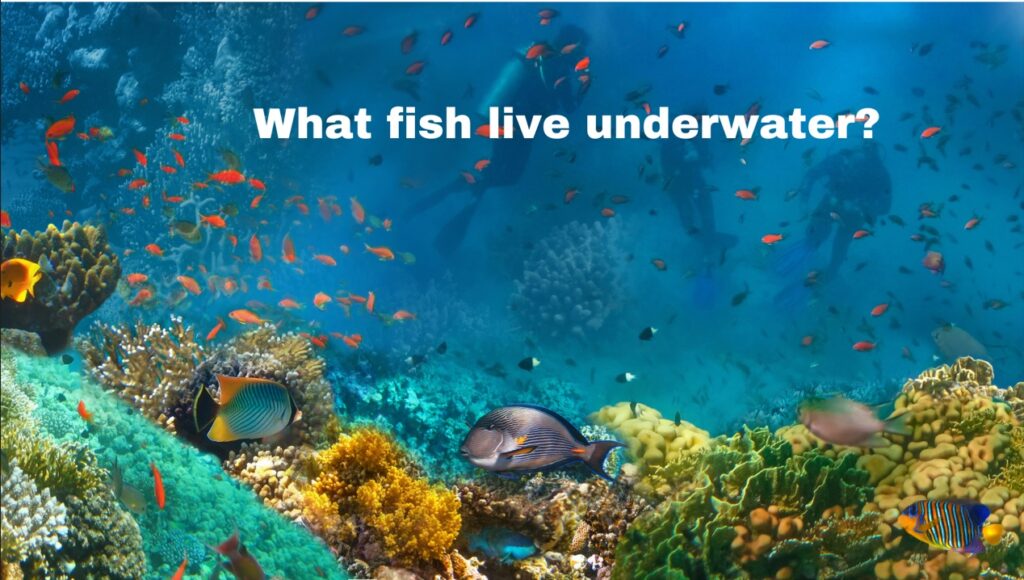
How many species of marine life are there in the world? no one knows. Although humans have conquered almost all the land, they have not been able to explore the ocean. The ocean is the birthplace of life. In the more than 3 billion years of the development history of life on earth, more than 85% of the time was completely spent in the ocean. The diversity of marine organisms far exceeds that of terrestrial and freshwater.
Among the four major categories of marine bacteria, marine fungi, marine plants, and marine animals, marine animals are the largest and most striking. There are 160,000 to 200,000 known species of marine animals, and scientists speculate that at least three times as many remain undiscovered. From tiny single-celled protozoa to large mammals over 30 meters long and weighing more than 190 tons. From the equator to the polar seas, from the sea to the depths of the sea, from the shore or the intertidal zone to the bottom of the deepest trenches, colorful and exotic marine animals can be found everywhere.
There are dozens of categories of marine animals, which can be divided into two categories: marine invertebrates and marine vertebrates, or three categories: marine invertebrates, marine protozoa, and marine vertebrates. In many oceanic regions, ocean currents bring nutrient-rich deep seawater to the shallows, increasing the variety and number of animals in the shallow ocean. Affected by latitude changes and sunlight, the distribution of warm-water marine biological belts, warm-water marine biological belts, and cold-water marine biological species also have their own characteristics. The country has also become a diver’s paradise.
Tasmania, Australia
Tasmania, located in the south of Australia, is Australia’s smallest state and its only island state. Compared with familiar Australia, it is like another world. This ancient and beautiful place is a temperate archipelago with more than 300 islands. Between Tasmania, the main island of triangular Tasmania, and Victoria is the Bass Strait, which connects the Tasman Sea to the east and the Indian Ocean to the southwest. The southern Indian Ocean exchanges surface water with the South Pacific, and the cold surface water in the high-latitude seas goes into the Antarctic Ross Sea through the Tasmanian Seaway, so the animal species here are more unique.
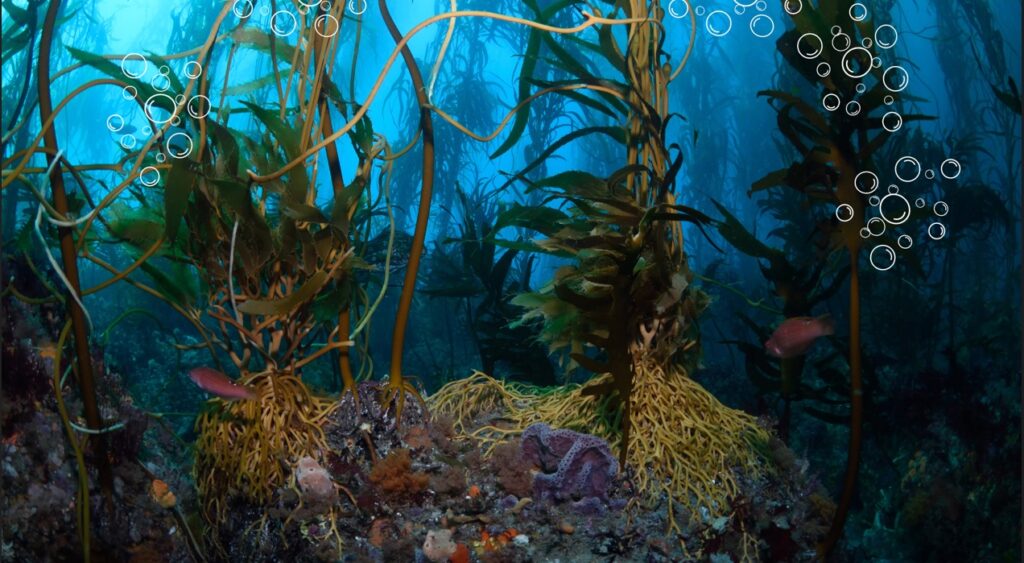
The Overbearing Octopus
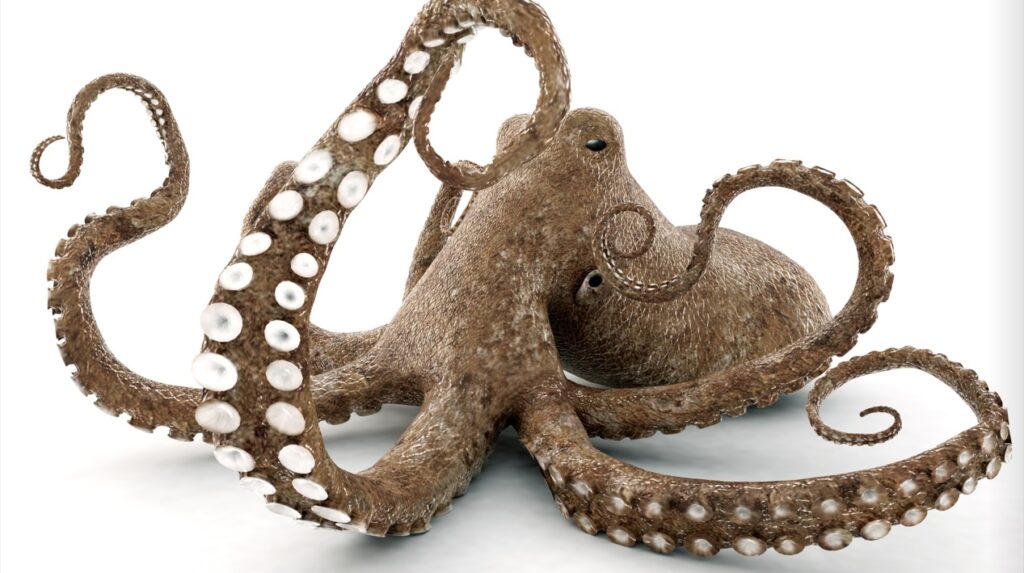
When it comes octopus, is the “one tyrant” in the ocean. It has 8 sensitive tentacles, each of which has more than 300 suction cups, and each suction cup has a pulling force of 100 grams. Octopuses have an amazing ability to change color and can change the color of their skin at any time. Under its skin, there are many pigment cells, which are filled with different colored fluids. When an octopus changes emotions such as panic, and excitement, its skin changes color. And once the tentacles are broken, new ones will soon grow back.
Although “overbearing” octopuses, if you really meet them, don’t panic too much, they always take the initiative to retreat. There are more than 200 known species of octopus, only the North Pacific has large species that do not like the flat seabed and always hide in rocky cavities. Therefore, there is very less chance of people encountering them in the water. However the tentacles of the octopus are very strong and the sucker is difficult to get rid of, so it is better to stay away from it.
Fur Seal

Fur seals generally live in cold waters and are unique which cannot be seen in tropical waters. Both male fur seals and sea lions have beautiful manes on their necks, and they belong to the sea lion family. Scientists have found that sea lions and bears are very closely related in biology and belong to the same branch.
The difference between them and seals is that sea lions and fur seals can walk on land with their flippers facing forward, while seals cannot. In addition, the little-finger-like ears are a feature that seals lack. Fur seals are very similar to sea lions, with their down-covered bodies and short faces, but they can’t learn the arts and can’t make pleasing and cute movements like sea lions.
Seals really have a “dog” look. However, because fur seals are soft and beautiful, they are often hunted by hunters for huge profits. Fortunately, under the protection of strict international laws, their population is gradually recovering.
Sea Spider
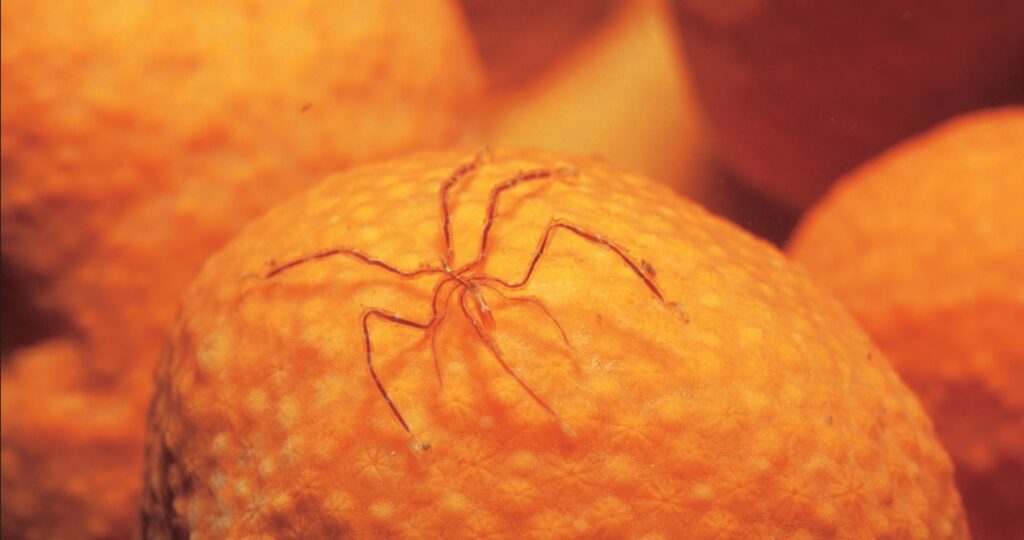
The sea spider is called the worm. It has long thin legs and a short torso, and it looks like a spider, so it gets this name. Sea spiders look a lot like a common “blind spider”. They live on the seashore, often crawling on seaweed or under rocks. They are found in almost every ocean. Paleontologists in the United Kingdom discovered a complete sea spider fossil 450 million years ago, which is an amazing “long-lived” animal. The body length of sea spiders is about 5-6 mm, brown or yellowish in color, and has unique anatomical features, including a special septum on their head that is specially used to transport eggs.
Sea Dragons
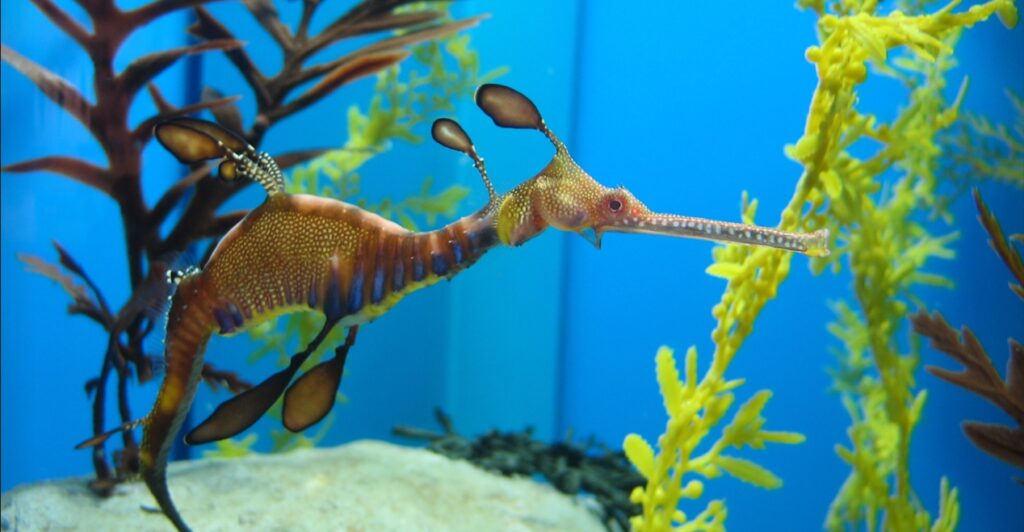
Endangered species Sea dragons Like kangaroos and koalas, Australian sea dragons are rare animals in Australia. Sea dragons are fish, closely related to seahorses and pipefish. The sea dragon’s skin is covered with a layer of armor-like bone. It has good eyesight and lives on tiny shrimp and sea fleas.
Since it has no teeth, it sucks food whole into its tiny mouth when it sees it. In fact, Australian sea dragons are divided into two types: Leafy Sea Dragon and Weedy Sea Dragons. Sea dragon is elegant in shape, colorful and slow in action. These are most favorite for underwater photographers. They survive by relying on their superb camouflage skills which keep predators. away from them.
When the male sea dragon is in heat, the color of the tail will turn yellow and the skin will fold, which tells the female sea dragon that he is ready to be a father. The female sea dragon lays her eggs on the tail of the male sea dragon, and the sea dragon’s father provides nutrients to the dragon eggs through the blood vessels of the hatching bed.
And mother walked away after dumping the dragon egg! Once hatched, the baby sea dragon can see, swim, and must find its own food to live on its own because its father is not responsible for looking after the baby sea dragon. Small sea dragons take two years to reach adulthood.
Blue Ring Octopus
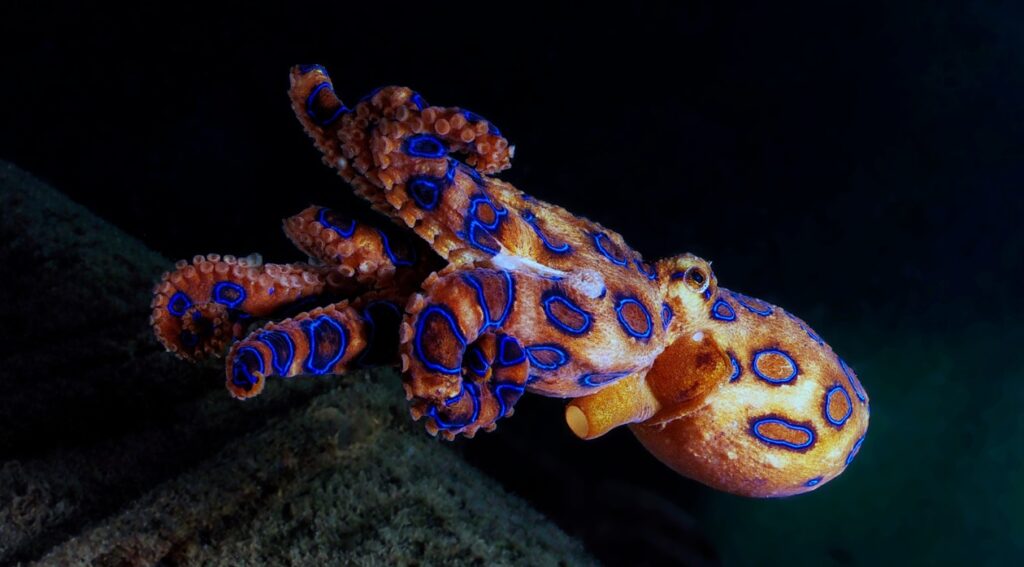
Octopuses are generally non-toxic, but the “blue-ringed” octopus tattooed on their bodies is extremely poisonous.
After getting the threat signal, the dark rings appear on the body and claws emit a dazzling blue light to send a warning signal to the opponent.
In the ocean, a bite from this tiny octopus can kill a person. Attacks on humans mostly occur when blue-ringed octopuses are lifted or stepped on from the water by fishermen or sea anglers. Its sharp mouth can penetrate a diver’s wetsuit while spewing a highly toxic ink that can kill an adult in minutes. One such octopus has enough venom to kill 10 adults, and there is currently no effective antimycin to prevent it.
Pygmy seahorse
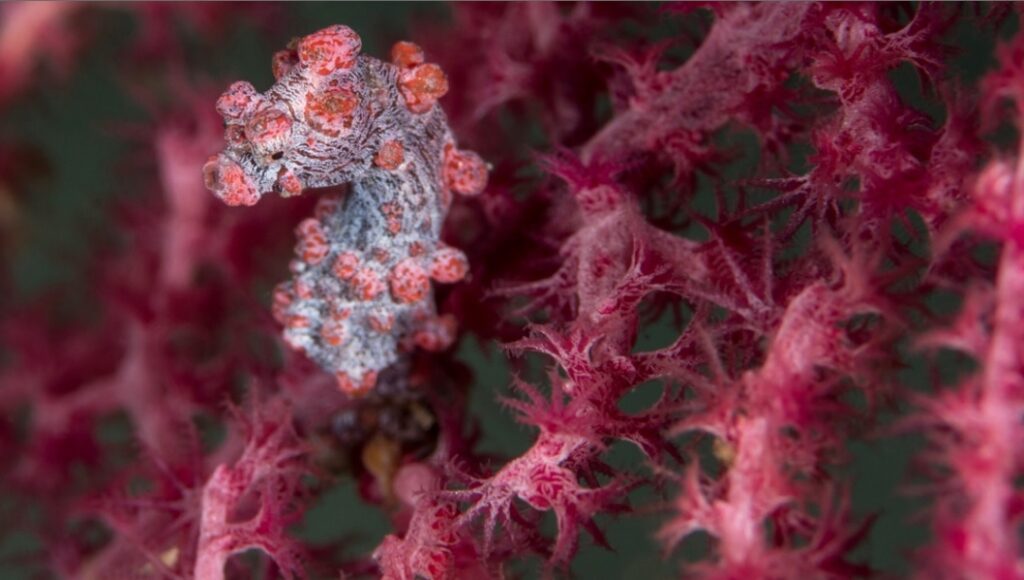
This little thing that looks very cute in the photo belongs to a seahorse, commonly known as the bean-doodle seahorse. Because of the popularity of diving, it has become the most popular star on the tropical island and even caused a whirlwind of pygmy seahorses, and divers from all over the world came to see its lovely face. Finding its whereabouts is not an easy task, as its body does not exceed 3 centimeters in length. So, it is very necessary to bring a magnifying glass when diving.
How many species of marine life are there in the world?
No one knows. Although humans have conquered almost all the land, they have not been able to explore the ocean. The ocean is the birthplace of life. In the more than 3 billion years of the development history of life on earth, more than 85% of the time was completely spent in the ocean. The diversity of marine organisms far exceeds that of terrestrial and freshwater.
How many known species of marine life are there in the world?
There are 160,000 to 200,000 known species of marine animals, and scientists speculate that at least three times as many remain undiscovered. From tiny single-celled protozoa to large mammals over 30 meters long and weighing more than 190 tons. From the equator to the polar seas, from the sea to the depths of the sea, from the shore or the intertidal zone to the bottom of the deepest trenches, colorful and exotic marine animals can be found everywhere.

Pingback: Adobe Illustrator v26.5 free download for windows (100% working) - theusaknowledge.net